Game Changer
The pressure was high to get everything perfect in a single take because once you start pouring paint, there’s no stopping!
This was definitely a team effort, and it was a great experience working with this group of talented individuals. I am very proud of all the hard work that went into making this series of creative and unique time-lapse videos. The solutions to each challenge are creative and interesting.
These time-lapse videos of the Nike Total 90 Tracer Football were shot on top-of-the-line digital cameras with quality that is nearly impossible to beat. At 5.6K, the imagery is sharp, clean and very crisp. Each individual frame is captured at up to 21 megapixels in size, allowing for plenty of editing headroom. Additionally, still frames from the video can be used as part of a coordinated print campaign. The stills from this shoot are stunning, high-quality images in their own right.
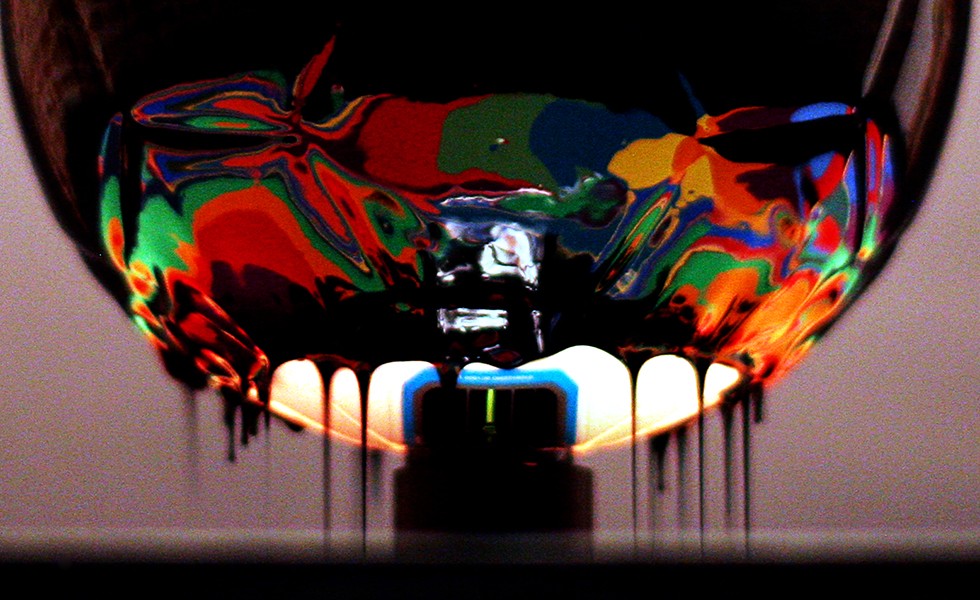
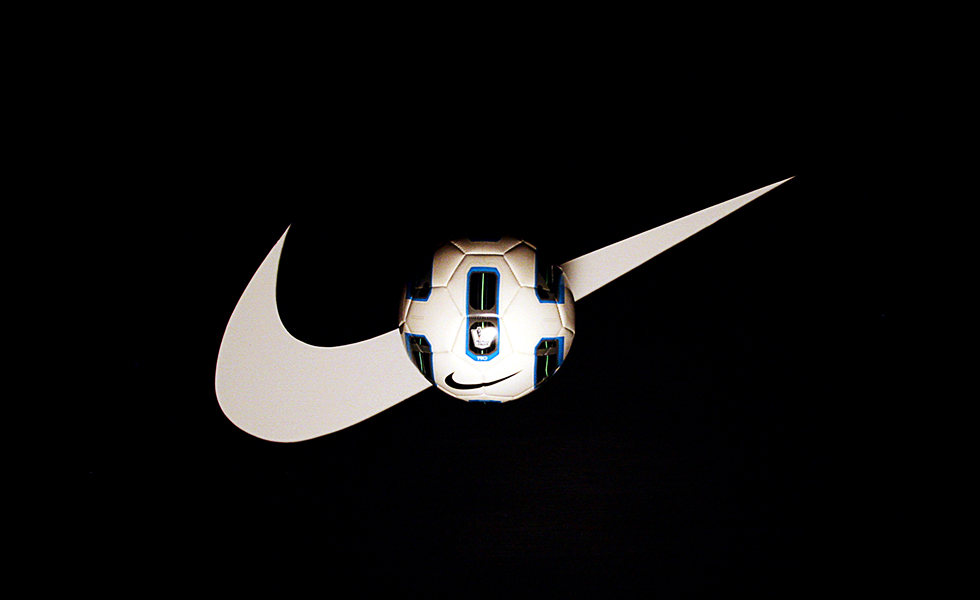
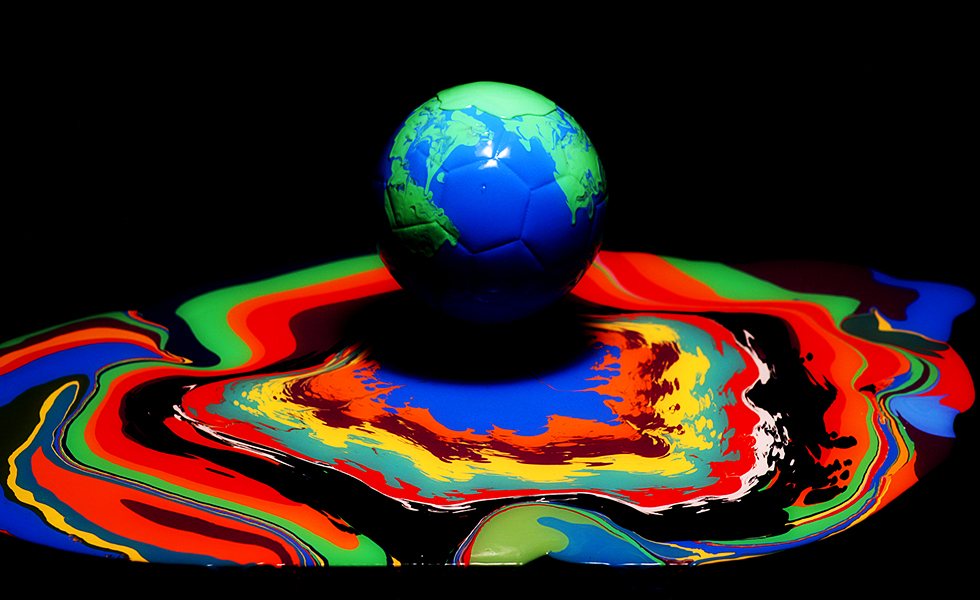
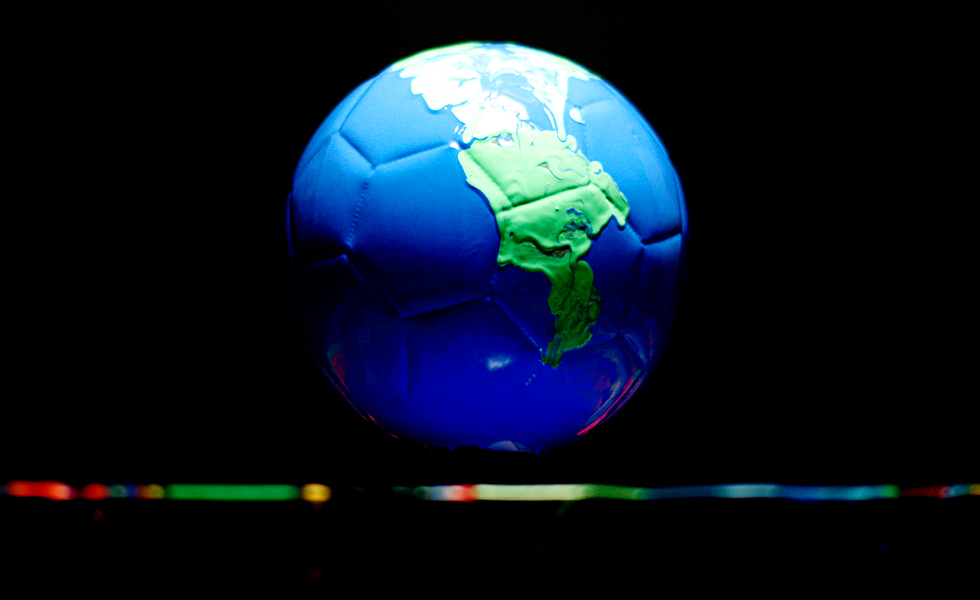

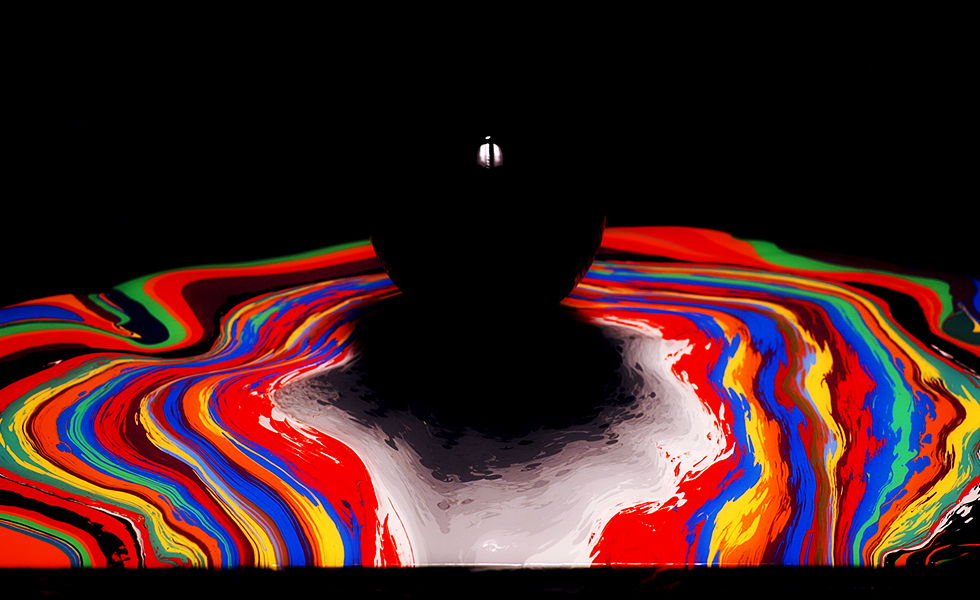
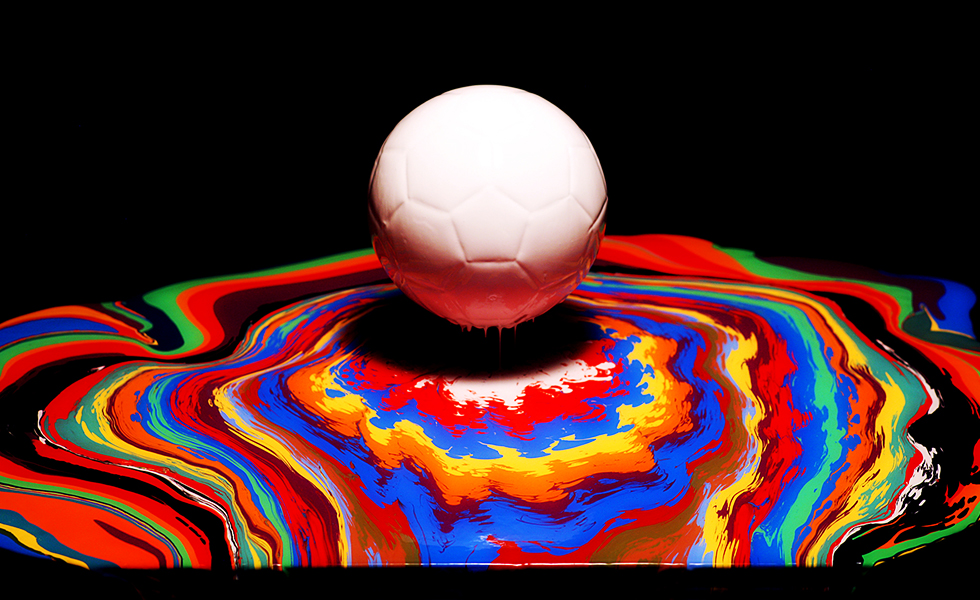
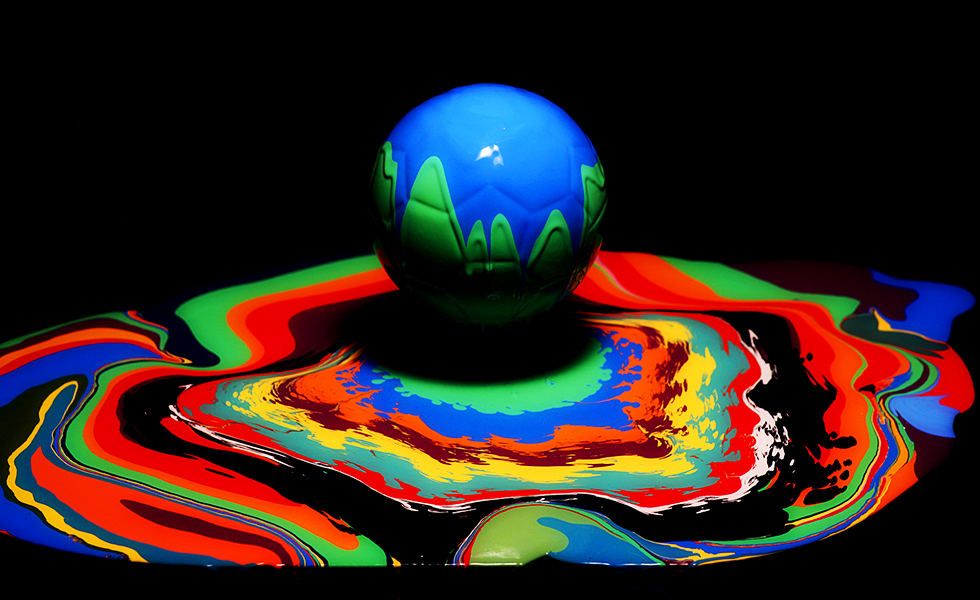
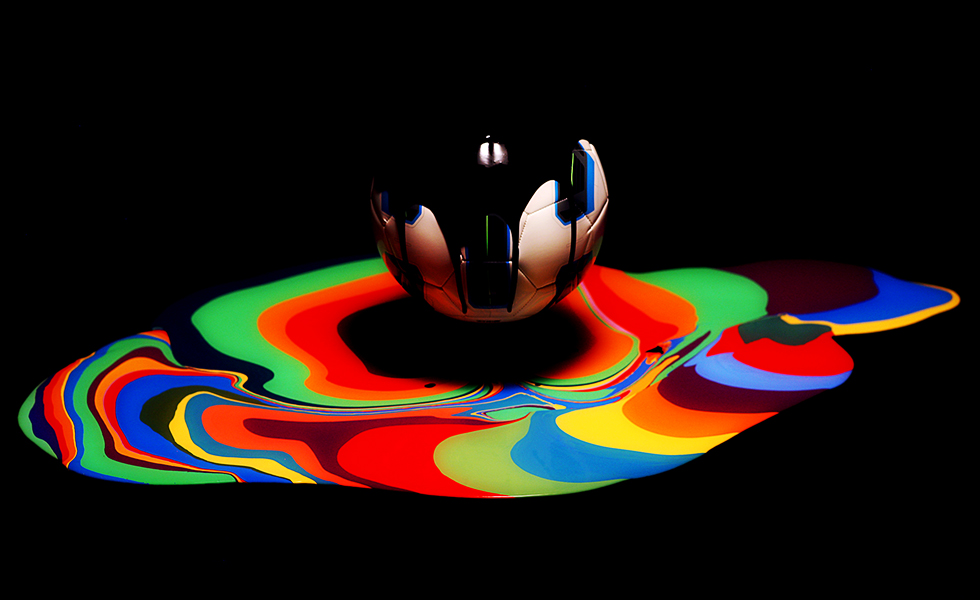
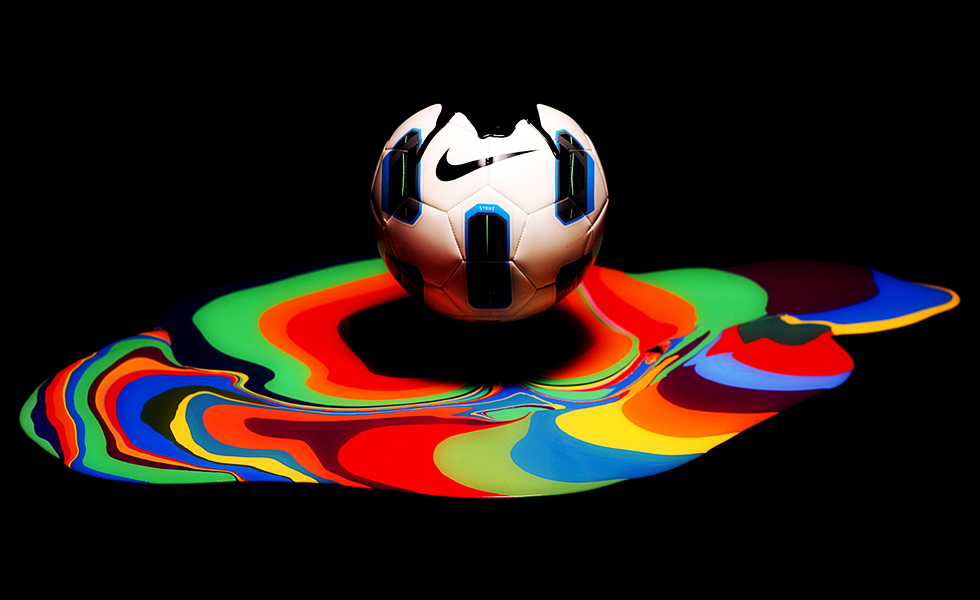
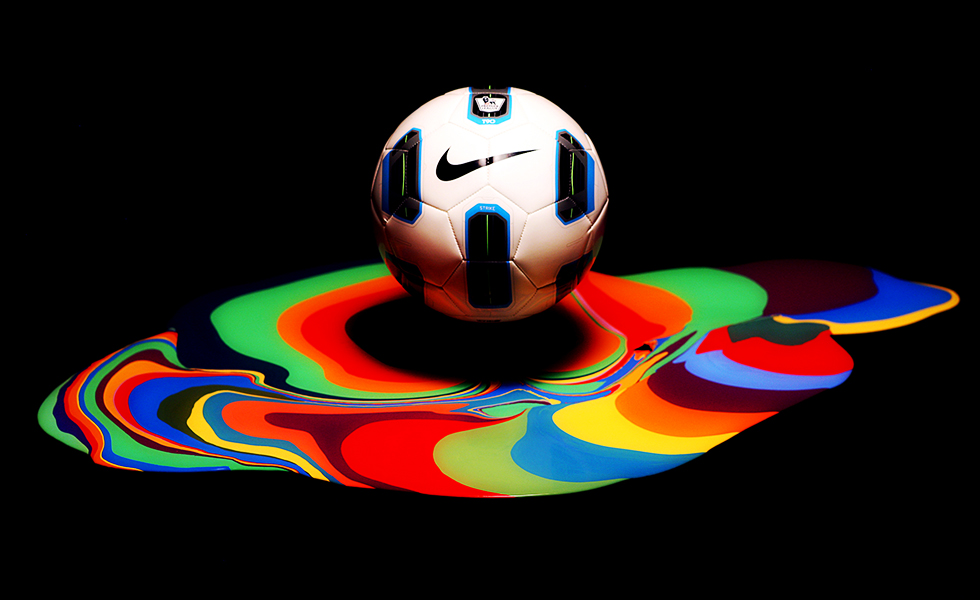
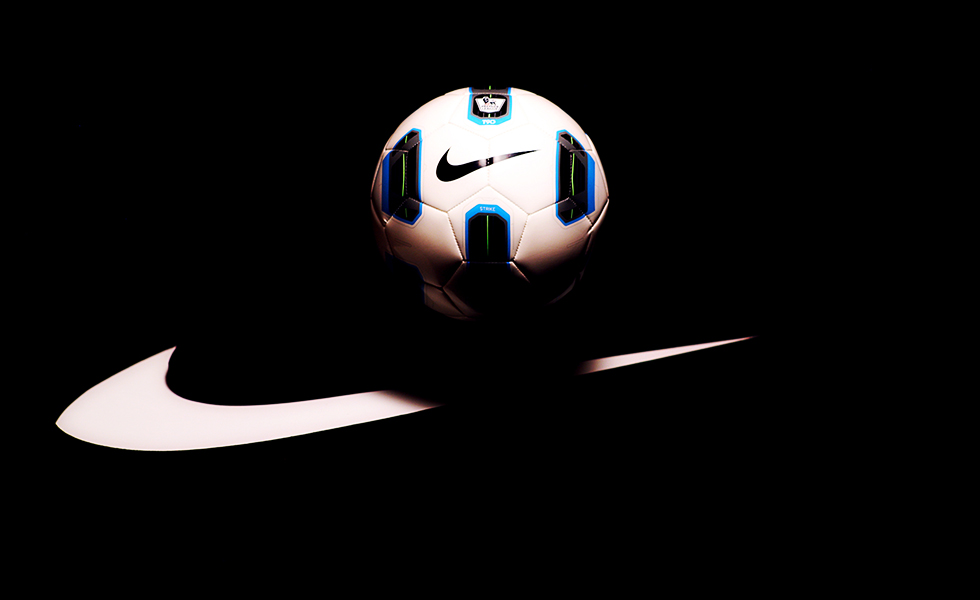
The Vision
This video is my second in a series of projects exploring the dramatic effects of poured paint and time-lapse technology. As in my first video, I was inspired to apply an artist’s technique — paint poured over objects — to my commercial work.
For this video, I chose to pour paint over a soccer ball and film it using multiple cameras and time-lapse technology to gradually reveal the ball through the paint — with a surprise at the end. I wanted to challenge myself and push the techniques I had already begun to explore in my last project. Before we poured the first cup of paint, I was visualizing how the paint would play off the ball, defining its shape and surface.
One of my most important decisions was which soccer ball to use. I decided to use the Nike Total90 Tracer Football, the official 2010-2011 association ball for not only the English Premier League, but for leagues all over the world. I began to think: How could I show the unity embodied by this one ball, and that it did not matter what country you’re from, what your religious beliefs are, or how you live — people from around the world all use this ball to play the most popular game on earth. I decided to turn the ball into a map of the world itself! During the time-lapse, I wanted the paint to gradually reveal the ball, spinning around to show the entire world.
With the help of several creative and very talented friends and colleagues, we went to town on this project. At our pre-production meetings, we put every idea on the table. These types of projects are breaking new ground — there’s no textbook for what we’re trying to create. We’re battling dozens of interdependent elements including paint flow, equipment and timing. Collaboration was the key to this project’s success.
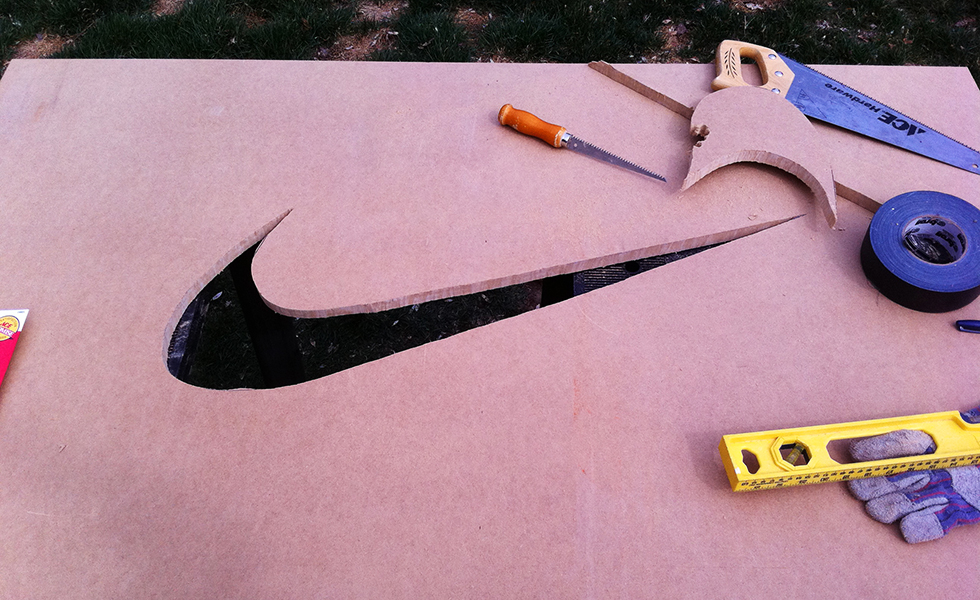
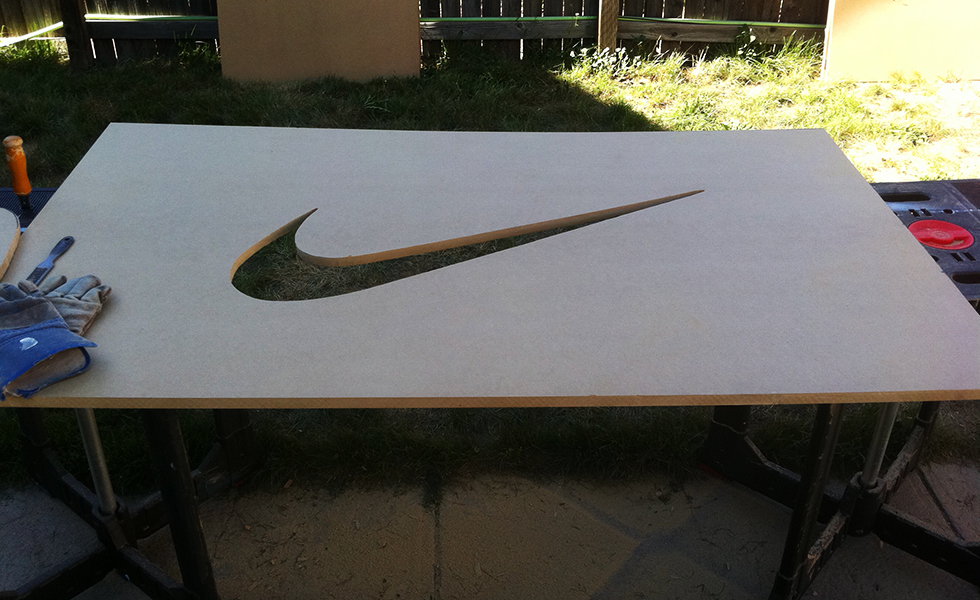
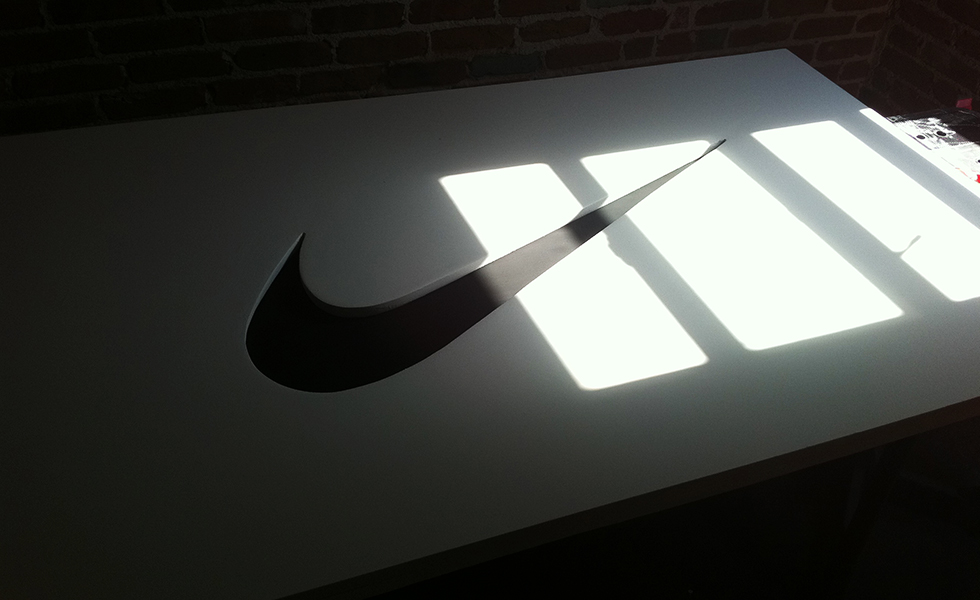
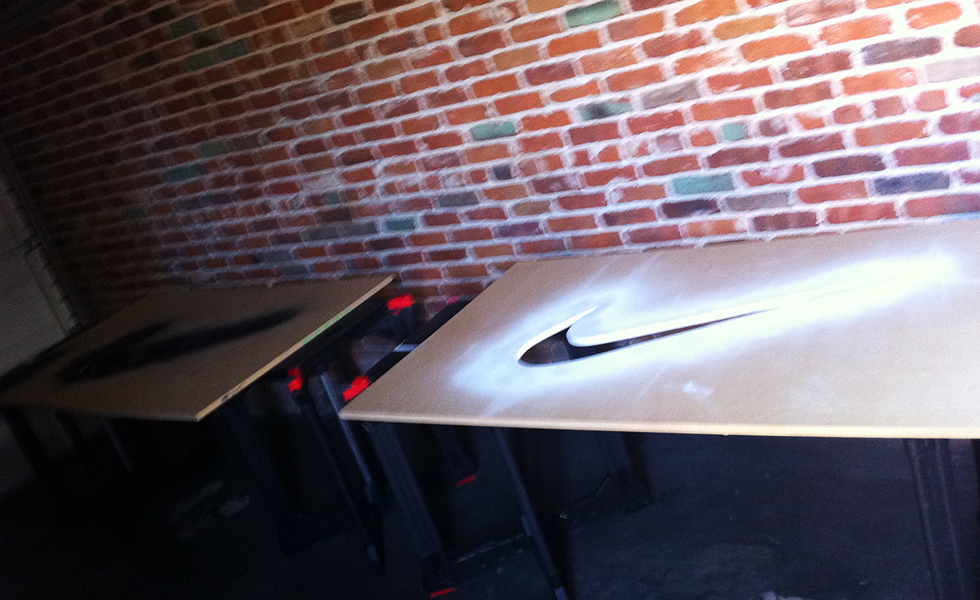

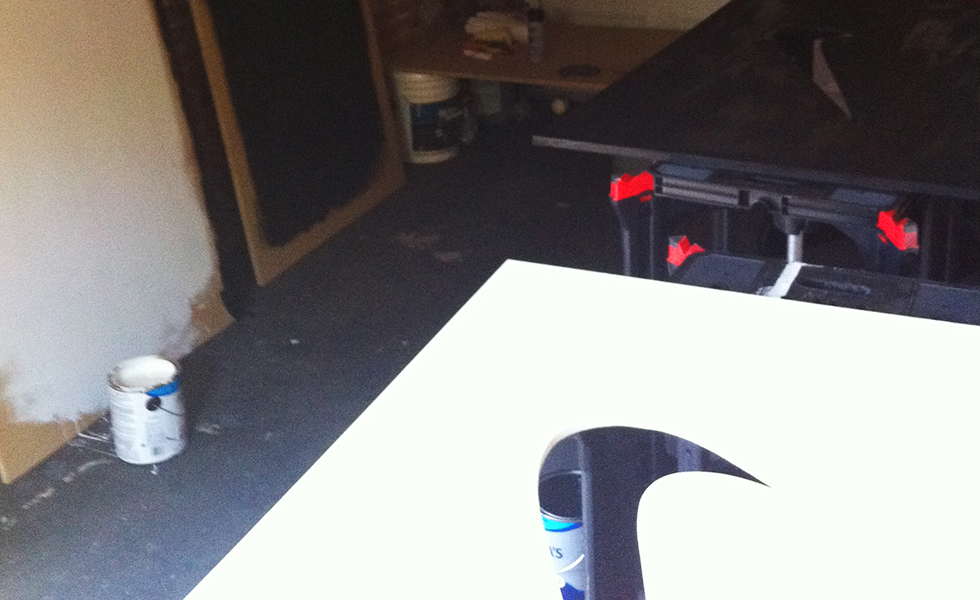
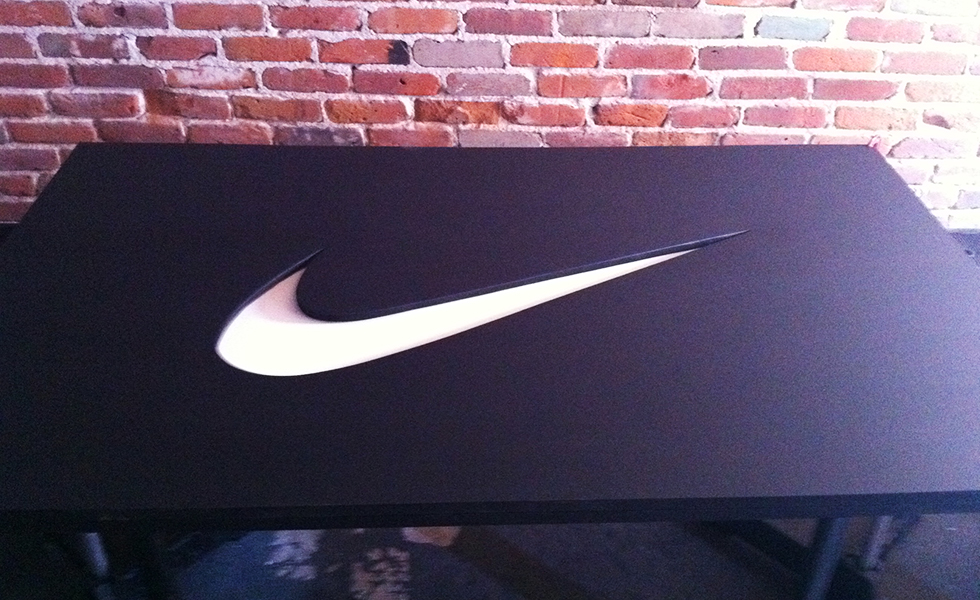
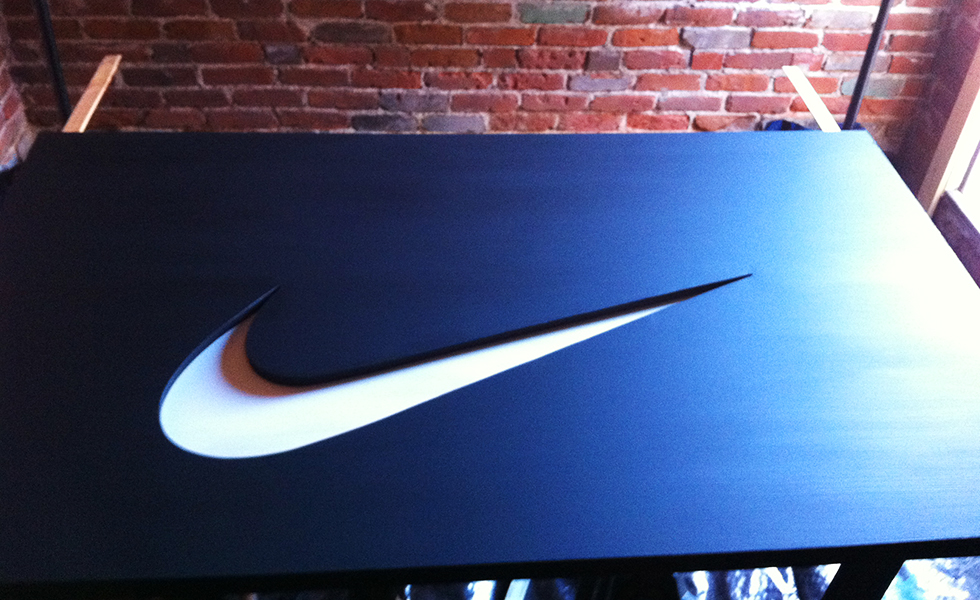
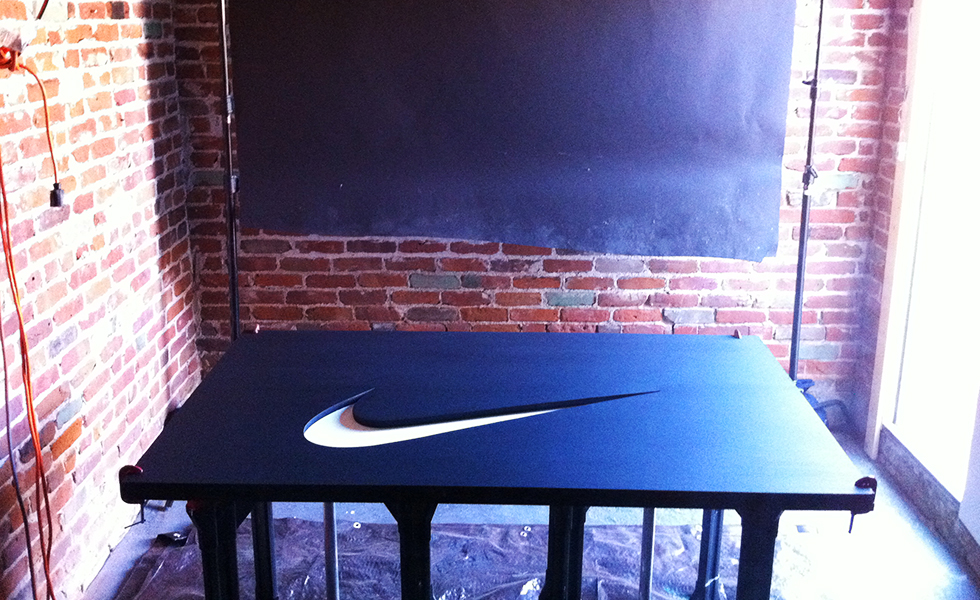
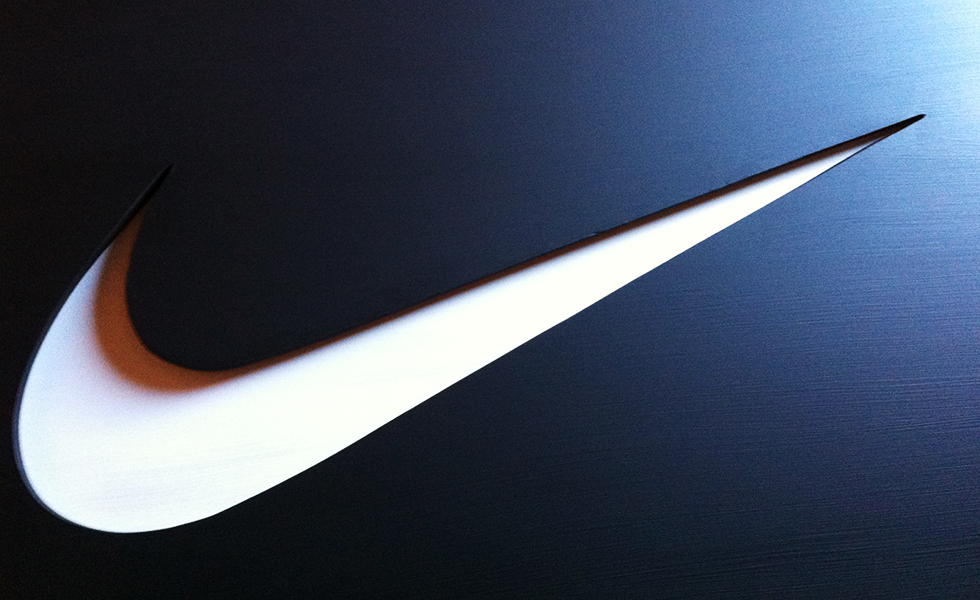
Crazy-Making Details
Game Plan
As in my previous video, it took precision planning and execution to bring this concept to life. I was able to re-use my plans and materials for the Nike logo set, and from my last shoot I learned a few tricks to help the shoot come together more smoothly. For instance, I learned that I needed to inset the logo deeper into the tabletop, so that the paint would fill the logo and spread more evenly across the table.
Another big change was turning the set black — black background, black tabletop. At first, I had the idea of shooting it with both a white set and a black set, which would switch back and forth in the final edit. In the end, however, I choose to stick with just the black set, which felt more dramatic and different.
The paints needed to be thoroughly tested before we began shooting, so we could anticipate where and how quickly the paint would spread. I called up an old friend and painter, who knows paint better than any one I know. Thank goodness he was up for a challenge! Some of the paints needed thickening and had to be put out the night before, while others were too thick and needed paint thinner added to become runnier. After plenty of experimenting, we found the perfect consistency for this time-lapse.
The Shoot
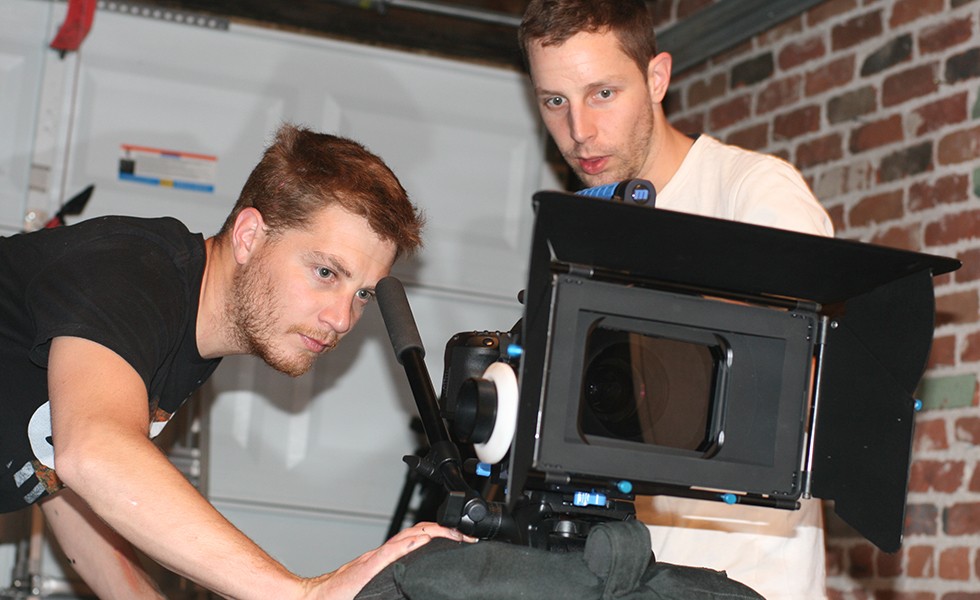
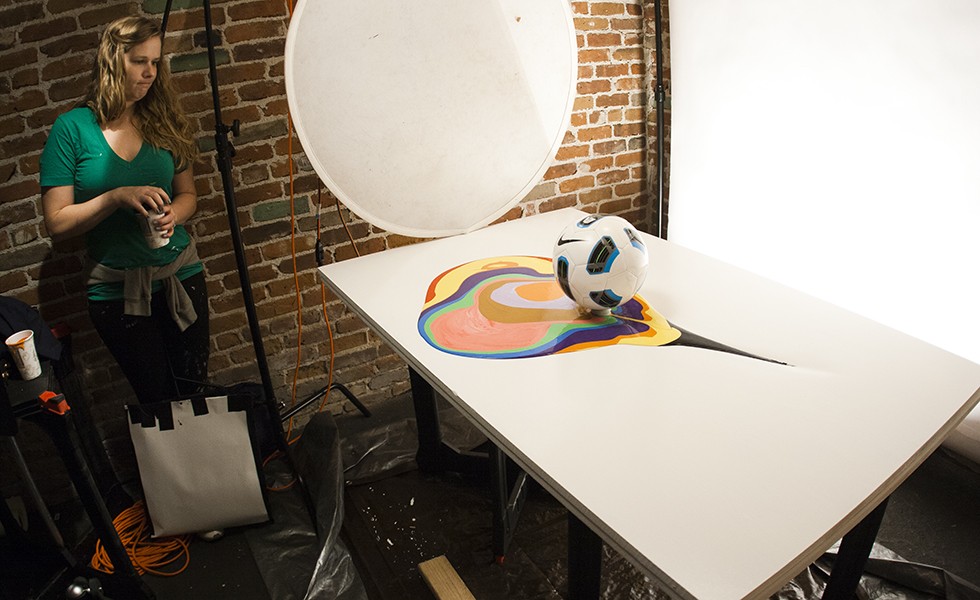
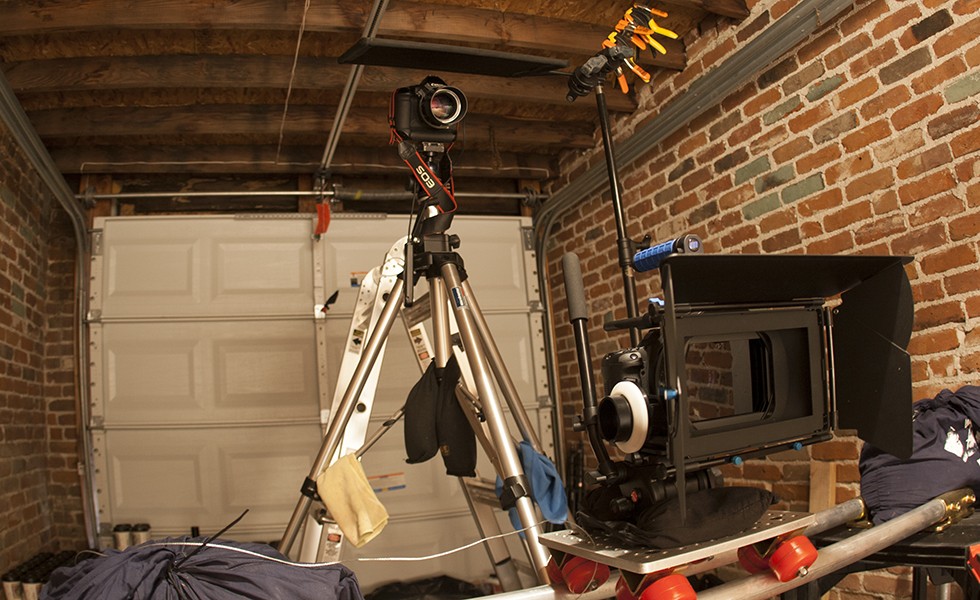
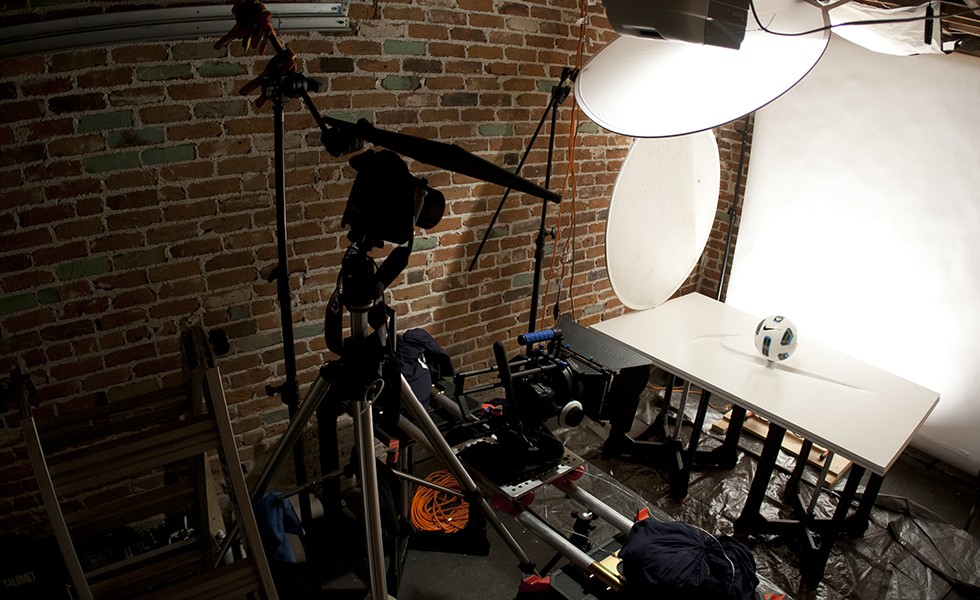
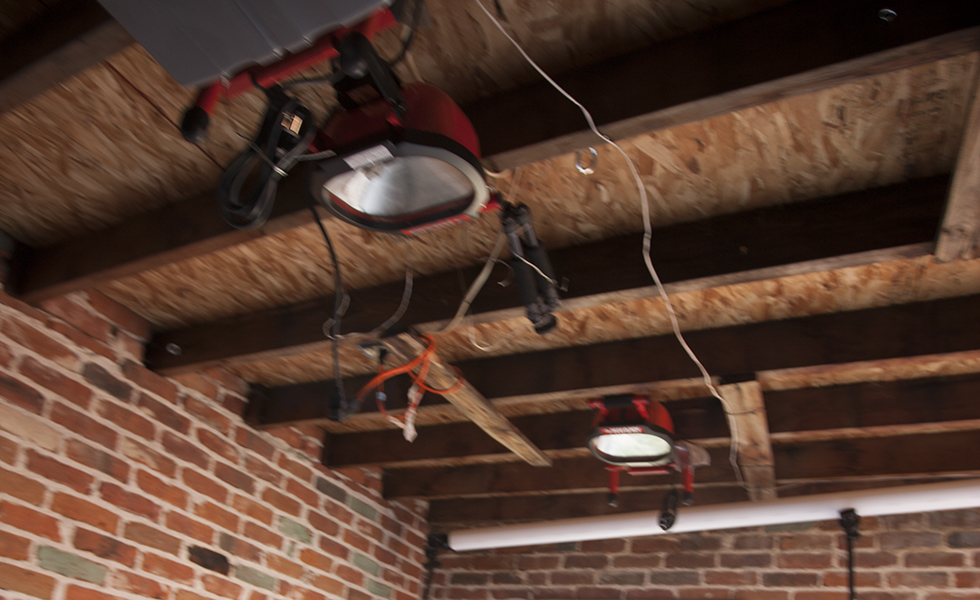
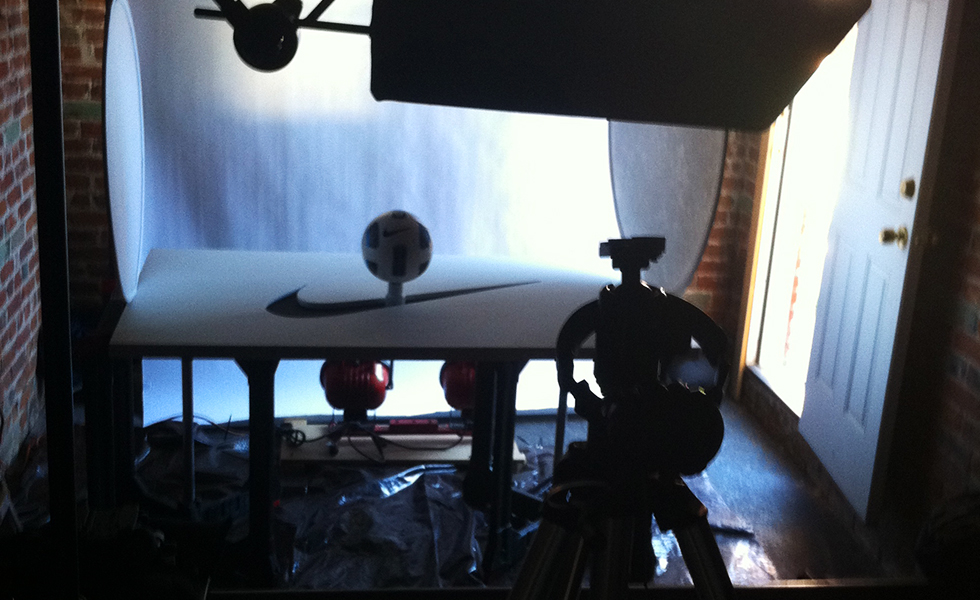
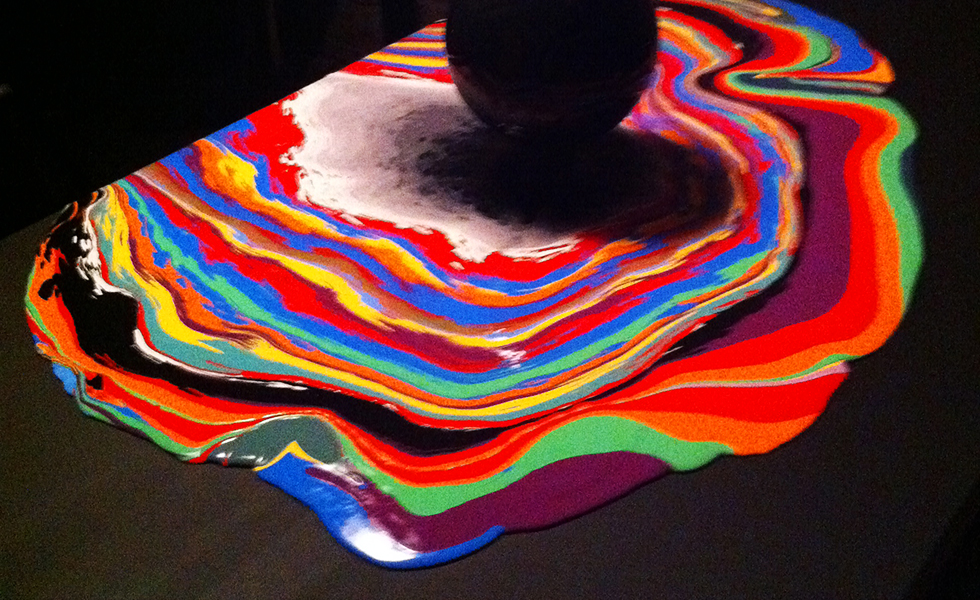
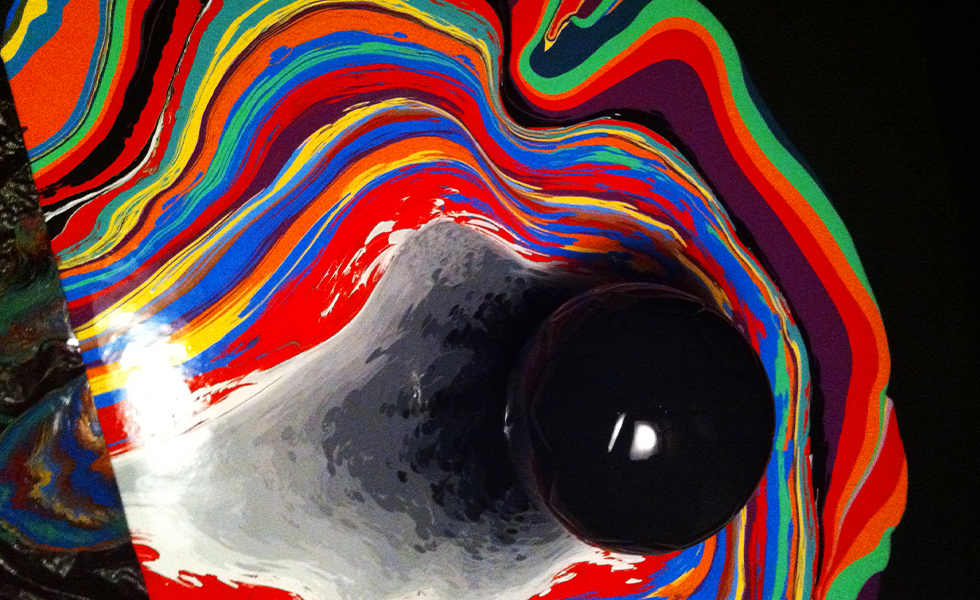
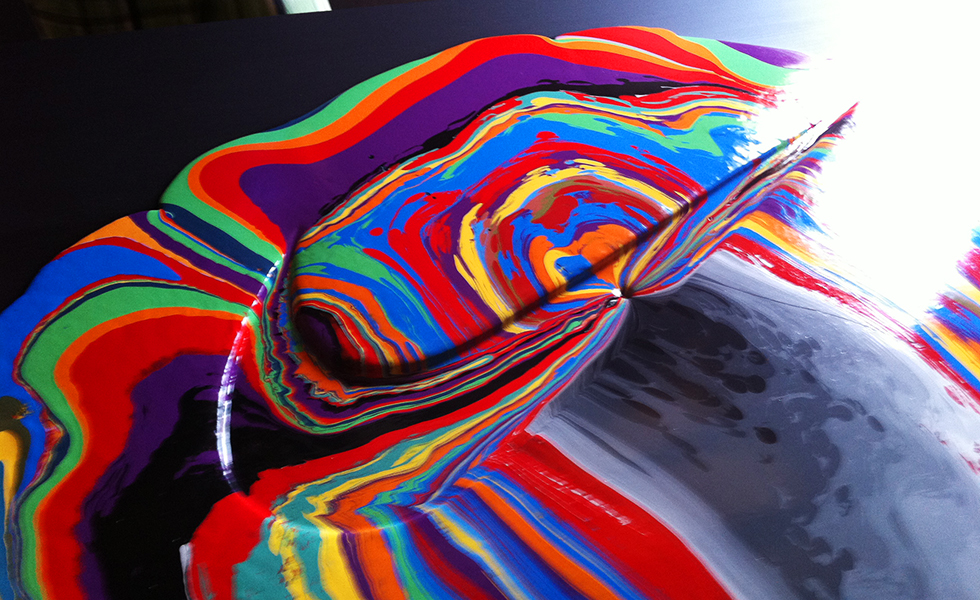
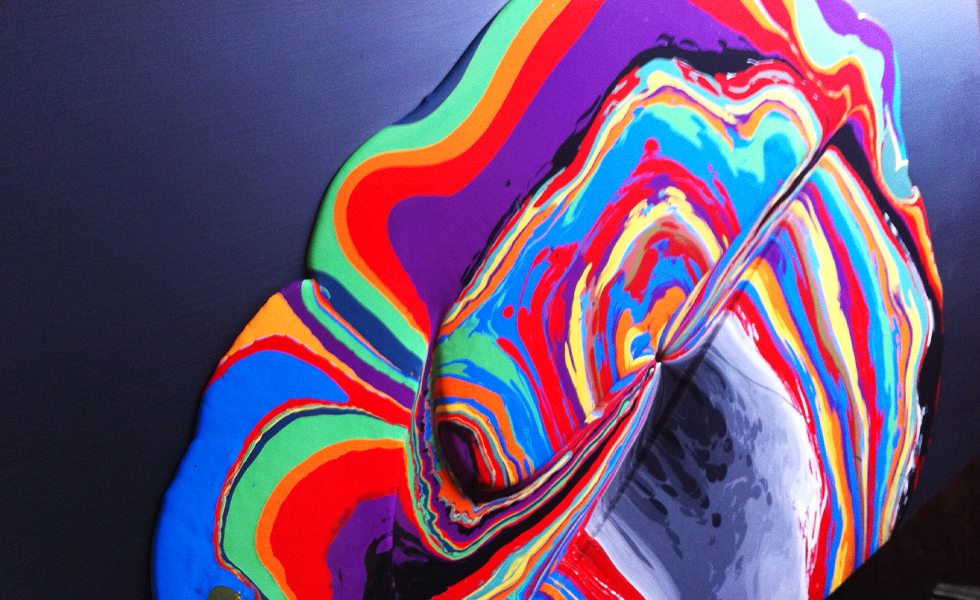
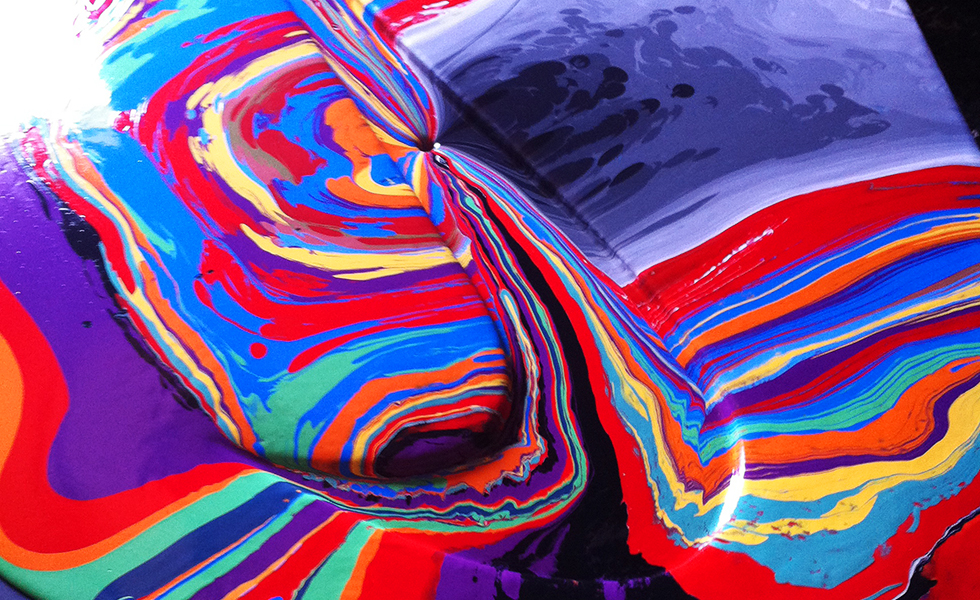
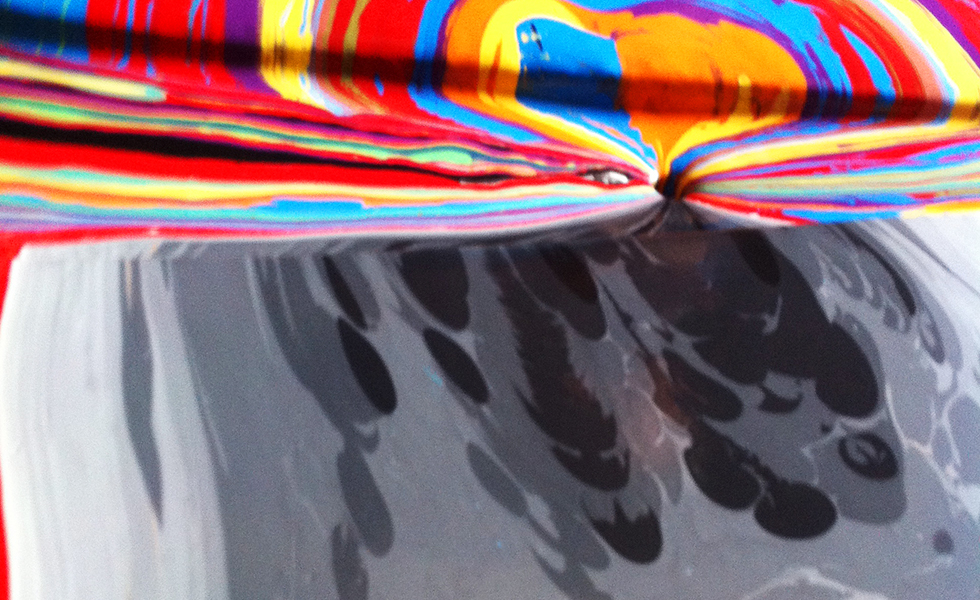
Many details of this shoot were similar to my previous time-lapse, but there were some very challenging elements my team and I had to deal with. I had to juggle the mechanics of spinning a ball on cue, controlling paint speed, lighting and synchronizing six cameras. My hands were definitely full on this one!
I was eventually able to solve the problem of the ball itself, which had to begin spinning with paint already present on the table, which I didn’t want to smear or splatter. The ball had to be secured to a stand with an internal mechanical component that controlled the spinning. After a few trips to the hardware store, I was able to assemble the necessary components, which included some plumbing piping. I was able to spin the ball from under the table, using a big bar to control the spinning, and make many small movements. This allowed me to take a ton of shots so the spin would look really fluid.
Post-Game
Dealing with the Deluge: 10 Unique Time-Lapses
I learned from my first time-lapse that I was going to produce tens of thousands of images in a very short period of time. I’d already developed a system to help me organize all those images, which made post-production that much more efficient. For this particular shoot, I ended up with a total of 10 unique time-lapses, each containing hundreds of images. One of the larger time-lapses contained 3,500 images — and that’s after removing the unusable frames in which someone’s hand appeared on-camera to make a mid-shot set adjustment.
My Secret Weapon: 5616 X 3744
Shooting this time-lapse contained a secret weapon. For the main angle, I used a Canon EOS-1Ds Mark III with a Zeiss Planar T* 1.4/85mm ZE prime lens. I shot ISO800, at an f/4 aperture with 1/6 second shutter speed. The image quality of this setup is incomparable, capable of producing each frame at a 21 megapixel RAW image. At more than 5600 pixels across and 300ppi, we effectively created a 5.6K video…way cool!!!
Automated Bliss: 30,000 Images
On an average shoot, I might generate 1,000 images. With these time-lapses, however, I have to organize and process over 30,000! After my first time-lapse, I was completely blown away by the sheer number of files we produced. It’s all worth it, though, as capturing so many images allows me to very precisely control the speed of the motion in the final edits. As in the first time-lapse, my toughest step in post-production was the Photoshop scripting. Normally this step can be quite easy and only take a few minutes to run, but when you’re handling so many images it makes things tricky. My process involves first going through a single time-lapse and grabbing about 10 random frames, including one from the beginning and one from the end. Then I choose the image with no paint and begin work on that. I get my basics down first: color correction, white points and black points. Then I add a sharpen layer, with some contrast and saturation. When I’m done, I export those 10 images and check each one and compare it to 10 images from each of the other time-lapses, before running an action on the rest of the time-lapse frames. I believe this process has helped keep the same look and feel to each time-lapse, so that they can be edited seamlessly together in the final video.
The Perfect Frame
Once the first drop of paint hits the set, there’s no turning back. You can’t hit “pause” on flowing paint, so we had to be sure every detail was perfectly planned before we began shooting. Orchestrating six cameras (with 18 tripod legs to bump!) while capturing flowing paint was a huge challenge, but the final result is so worth the effort.
The Gear
Hoodman
Hoodman cards have changed the way I think about shooting. In the past, I never would have trusted a 16GB CF card on a shoot – What if something went wrong? What if the data was corrupted when I went to download the images? What if I dropped a card into the river while shooting? Coming from a background shooting on traditional film, I would never think of shooting a single roll of film containing hundreds of images! If there was a processing error, you’d lose the whole shoot. Instead, we shot on rolls of just 36 images. When I began to shoot digital, this way of thinking led me to purchase small 2GB cards so that if one card were corrupted, I wouldn’t lose everything. However, Hoodman’s high-quality, performance-tested cards mean there’s no reason to ever fear a card read error (yes, even if I drop it in the river). Hoodman is now my sole provider of CF cards, and I’m honestly more likely to misplace a card than to have one fail.
I trust Hoodman on every shoot and I trust them with my reputation. While shooting my reverse time-lapse films recently, I relied heavily on Hoodman’s RAW STEEL 16GB SHDC CLASS 10 cards. When you’re shooting 30,000 images in five hours, with five different cameras meticulously positioned all around the room (including one on the ceiling!), you don’t want to have to risk bumping a tripod or set element to change cards every other minute. By using these massive CF cards, I only had to change cards once during the entire shoot! There are so many variables that must be managed on a high production value shoot, and I have to be able to count on my cards. Shooting on Hoodman cards lets me focus on everything else that can go wrong a shoot – except losing my data.
Read more about how Hoodman cards have changed the way I shoot here.
Lowepro
Sometimes you find a product that is so perfect that it’s impossible to replace because it just won’t die. My Lowepro camera bag is like my favorite winter coat. I grew up in Chicago and later Denver, where winter coats are worn practically half the year. My mom was constantly buying me cheap new winter coats, because every year I’d destroy the old one (and what’s the point of buying an expensive one if I’m just going to destroy it?). Between walking to the bus and playing football with my brothers and friends, it took quite a beating. Towards the end of middle school, I finally convinced my mom to buy me a really nice winter coat from North Face, which I’ve worn for the last fifteen years. It wouldn’t even tear when I skied through tree branches slapping at full speed as I tore down a mountain slope. As trusty a companion as that coat has been to me, I resent it for being so indestructible. Every wintertime photo of me from age 14 to now, I’m wearing that coat. Last year, I finally let myself buy a new coat – not because the old one was damaged or worn out, but because I just wanted something different! It’s the same story with my Lowepro camera bag.
About six years ago, I bought the Lowepro Photo Trekker AW II, and it’s so good that I almost hate it. Whenever Lowepro came out with a new model or added new features to their line-up, I dreamt about the day when my old one would finally break down and I could buy a shiny new model. Like my old winter coat, my Lowepro bag just won’t quit. Even though it’s still in perfect condition, I recently bought a few new Lowepro bags, just to try something new. I’ve never had a single issue with my old bag, and I’ve traveled the world with it. It’s been to Africa and thrown into sketchy planes with fuel leaking out of the wing next to the bag. It’s been crammed into tiny overhead bins on tiny commuter planes. It’s fallen off a snow machine at full speed, right into fresh powder. It’s been by my side in the deserts of Namibia , shooting star trails in the freezing winter and in the sand dunes of Colorado and California. It’s been co-opted as a seat, a pillow and an umbrella. My Lowepro bag has taken everything I could throw at it and more, protecting my expensive photography gear and keeping me shooting.
Take a peek inside my bags to see how I packed for my latest shoot:
LowePro Photo Trekker AW II -Bag #1
5-Cameras; 1-Ds Mark III, 1-D Mark II; 5D Mark II; 20D; Rebel XTi (not shown in photo)
6- Lenes; 70-200mm, 100mm Macro, 17-40mm, 15mm FishEye , Zeiss Planar 85mm, Ziess Planar 50mm
1- Case for Hoodman RAW compact flash cards
1- Hoodloupe 3.0
The equipment list for bag #2
1- Hoodman Cinema Kit Pro
4- Pocketwizards Plus (1 transmitter & 3 receivers)
16- Batteries (extra batteries for all cameras; cable releases; pocketwizards)
13- filters (ranging from ND, split ND, polorizers, and more)
1- 80-200mm lens
4- Cable releases (2 timers, 2 regular)
1- Sekonic light meter
1- set of extension tubes (for extreme close ups)
PocketWizard
We set up a total of 5 cameras, all shooting at the same time. I have only 2 intervolmanters (they are a bit pricy), but I make up for it with PocketWizards. During the shoot, I had my main time lapse camera running on a timer remote programmed to shoot an image every 3 seconds, with a PocketWizard transmitter on that camera. The other cameras all have a PocketWizard receiver on it, with a cable to the cable release. Once the main camera takes a picture, all the rest of the cameras fire as well. This PocketWizard setup saved me money and provided a very dependable way to remotely fire cameras. During this important shoot, with so much time put into set up, I had to be sure that all cameras were in sync. I trusted PocketWizards to come through, and I always do.
Creative Collaboration
Brian Wall Fine Art
I asked Brian for the impossible and he delivered! A local painter with a seemingly endless supply of talent and creative solutions, he was able to achieve a feat that other artists wouldn’t even attempt. He came in during our time-lapse shoot to slowly paint a globe on the wet and endlessly-rotating ball, working methodically from the top down, moving out of the way every few seconds so we could capture another frame for the time-lapse, all while maintaining our pristine set. If he’d bumped the ball, spilled some paint or even dropped a brush, we would have to start over from the beginning. Talk about pressure!
Brian has become my go-to guy when I need an artistic miracle, and he never disappoints. I love collaborating with him because he goes with the flow and is always up for whatever crazy idea I throw his way. In addition to paint, he works with plexi, plasters and a myriad of other mediums. He’s a great addition to any shoot, and he really stepped up to the plate on this high-pressure project. I’m so glad he was able to work with us and add his unique flavor to the project.
Check out Brian’s website where you can purchase his amazing artwork.







